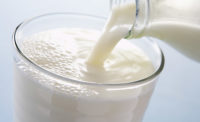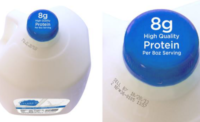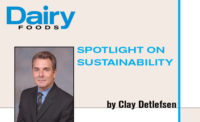We still hear a lot about sustainability years after that word first became in vogue. I guess it’s here to stay.
We have heard a lot about sustainable packaging, source reduction in packaging, and compostable and biodegradable packaging made from corn or other bio materials. These are all great efforts to make us greener, and they clearly have a place in the sustainability movement.
One thing we don’t hear much about is paperboard milk cartons and drink boxes. To be honest, I don’t think about them very much. Perhaps I should, because it turns out they can be very sustainable packages.
According to the Environmental Protec-tion Agency, the U.S. recycling rate for paper and paperboard in 2013 reached 63%. In contrast, the rate for aluminum beer and soda cans was about 55%, glass containers around 34%, and HDPE bottles were recycled at 28.2%. Unfortunately, I could not track down a precise recycling number specifically for milk cartons, but I suspect it is way below HDPE containers. This just means there is room for improvement.
Myriad benefits from recycled paper
Most recycled paper and paperboard (including milk cartons and drink boxes) is used to make new paper and paperboard, or even building materials. In fact, 37% of the fiber in new paper and cardboard is of recycled origin, which is good for the environment on many fronts. For instance, it takes 24 trees to make one ton of virgin paper, and it takes 7,000 gallons more water to make virgin paper rather than using recycled paper. Using recycled fiber reduces energy consumption by 40%, air pollution by over 70% and water pollution by approximately 35%. Those are very good statistics, and they build a strong case for considering paper-based packaging as a sustainable choice. EPA has noted that the greenhouse gas (GHG) benefits associated with paper and paperboard recycling are equivalent to a reduction of 149 million metric tons GHG, or the same as 31 million cars being taken off the road.
According to The Carton Council of North America, 48% of U.S. households now have access to carton recycling, which is up considerably from 2009 when it was only available to about 18% of U.S. households.1 The Carton Council is composed of four leading carton manufacturers: Elopak, SIG Combibloc, Evergreen Packaging and Tetra Pak. Together, they work to deliver long-term collaborative solutions in order to divert valuable cartons from landfills.
How to recycle school milk cartons
One of the most important areas that the Council is working on is improving milk carton recycling in schools. Why? Because our nation’s schools send 5 billion milk and juice cartons to landfills each year. The Carton Council has done a great job of putting together a school carton recycling program start-up guide, available at RecycleCartons.com. The guide begins by telling the reader to find out if milk and juice cartons are recyclable in the reader’s community, and directs them to a website where they can check that status. From there, it directs the reader to gain approval from school authorities, determine who will coordinate the program, and work with the waste hauler to follow their requirements.
The guide has extensive pragmatic advice on how to make the program work and identifies issues that can be problematic if not properly addressed. The guide contains numerous tools to assist with creating a school carton recycling program, including several checklists, sample correspondence and calculation tools. The program is well laid out and undoubtedly has helped many schools get such an effort started successfully. Hopefully this article will drive some of you to bring this to the attention of your children’s schools. Consider yourself challenged!
The Council estimates that if all the elementary schools recycled milk and juice cartons, it would keep 25 million full trash bags out of landfills, save almost 1 million trees and 374 million gallons of water, and conserve 214 million kWh of electricity – which is equivalent to taking 304,000 cars off the road. I’m not sure why everyone is obsessed with cars, but you have to mention them or you are not credible.
Recycling tool kit
In addition to the guide for schools, the Carton Council also offers a tool kit to assist with starting carton recycling in your community. (See their aforementioned website.) Even more information and assistance materials are on their CartonOpportunities.org website. As with the school program, the Council’s website gives great instructions on how to get cartons included in community recycling programs.
It appears that the Council will put boots on the ground to get a community program going in the right direction. In fact, they acted as a facilitator when Los Angeles wanted to increase carton collection within its community recycling program. As a result of the Council and city’s efforts, along with other partners, Los Angeles was able to bump carton recycling from 15 tons per month to 38 tons.
There are lots of reasons why cartons make a good sustainable package. With the help of right- minded citizens, officials and entities like the Carton Council, using and recycling milk and juice cartons must be part of our sustainability practices. Clearly, enormous progress has been made in recent years, with more to come in the future.
1 According to the Carton Council of North America, 55% of U.S. households have access to carton recycling.




